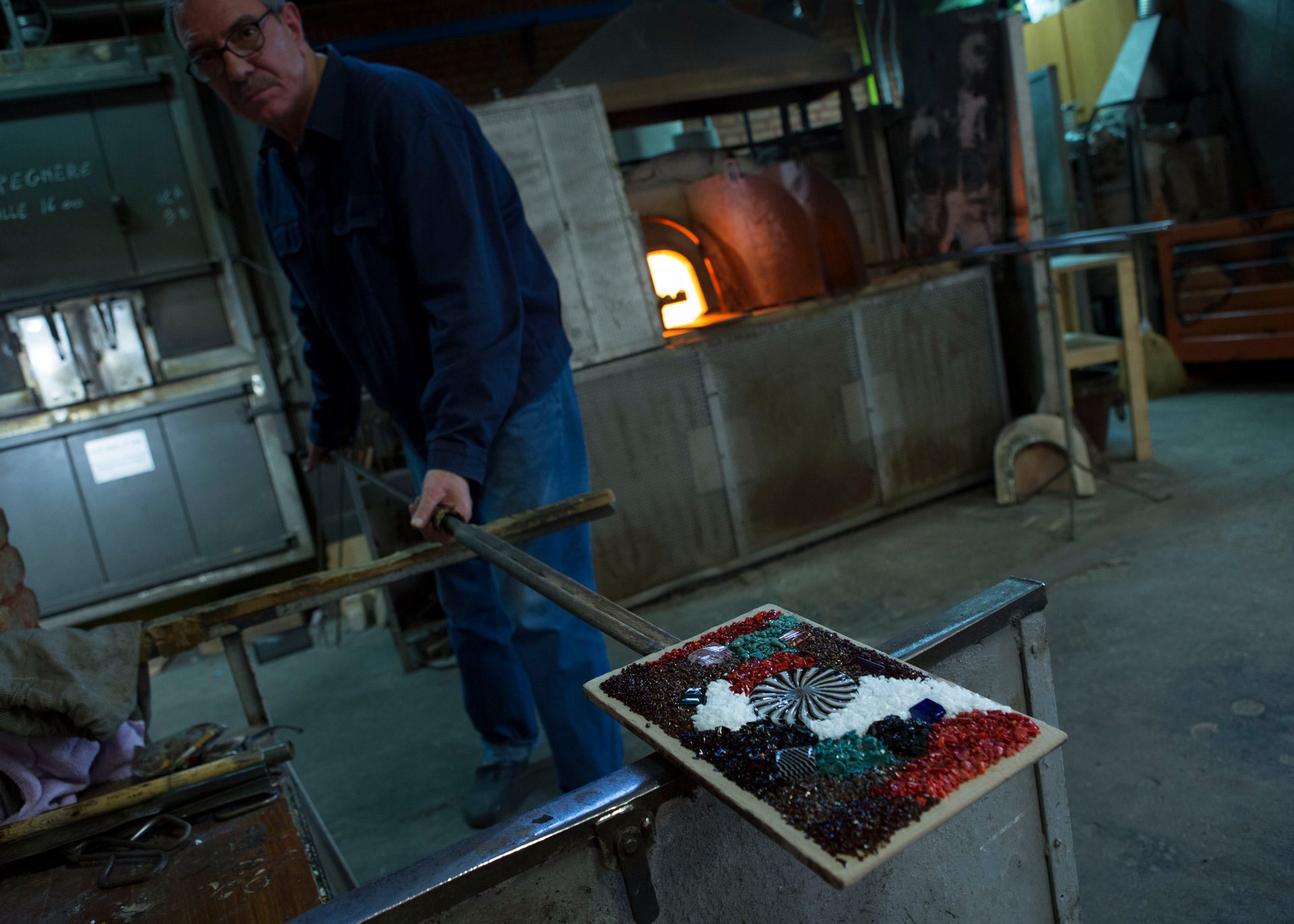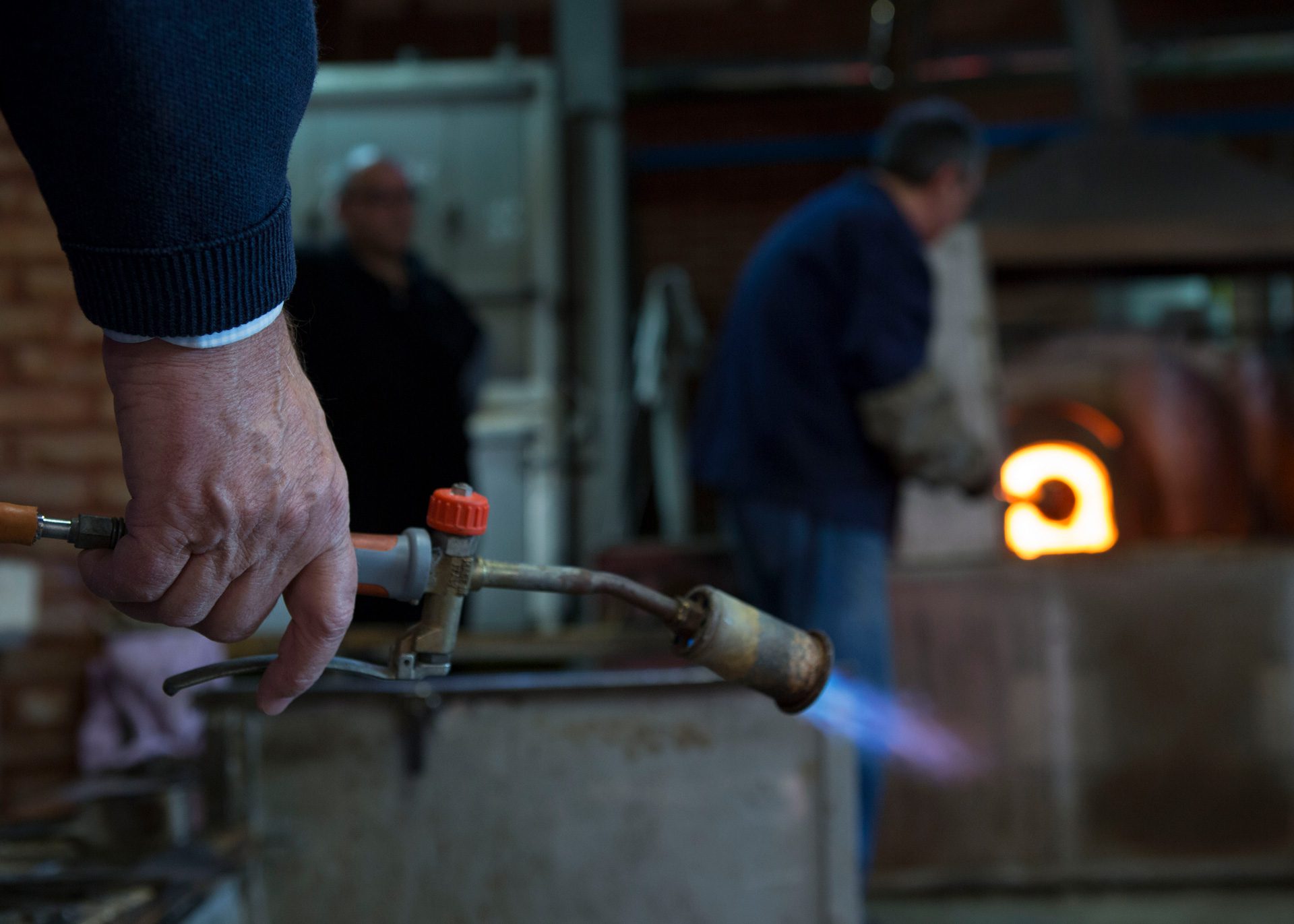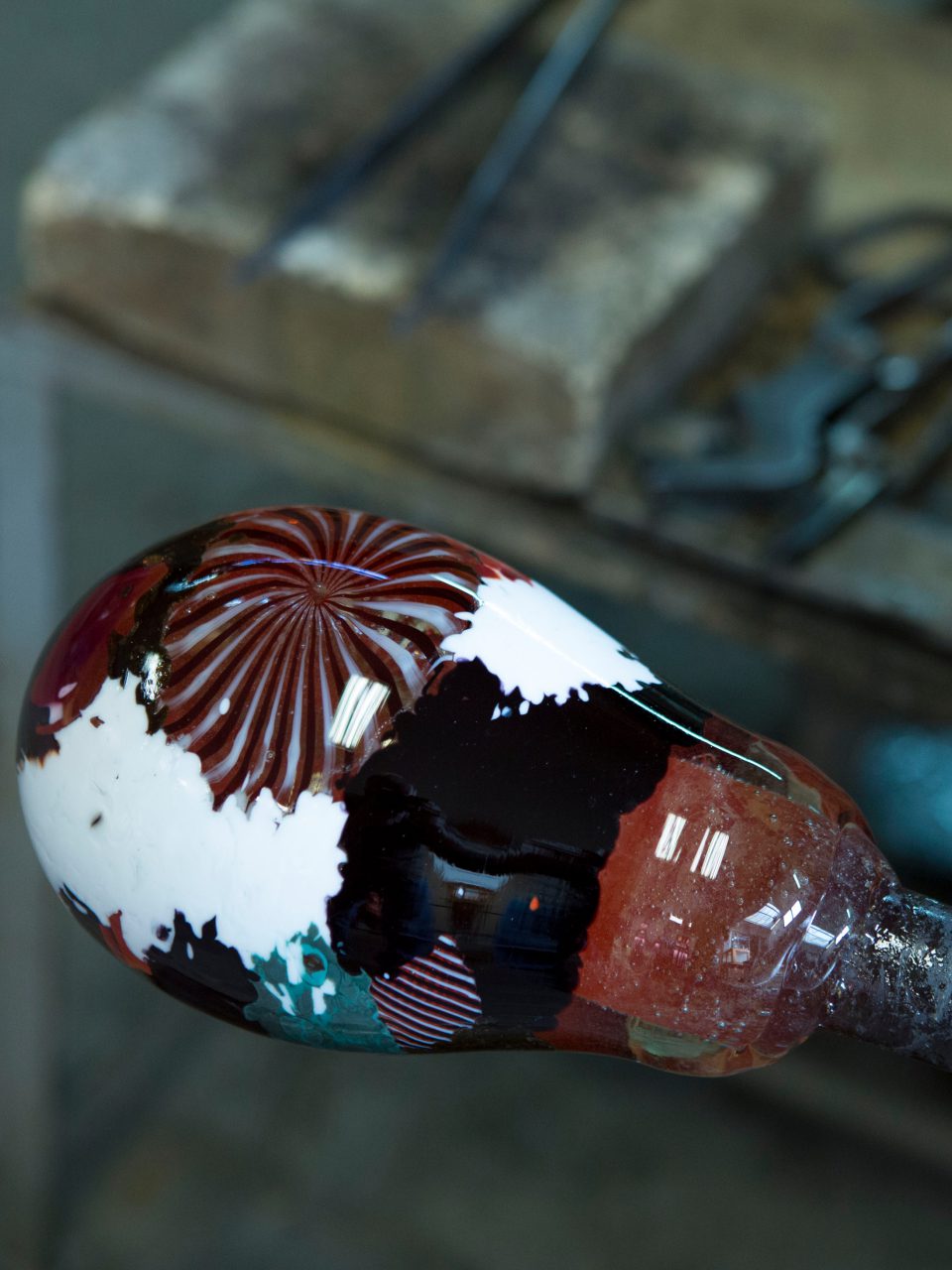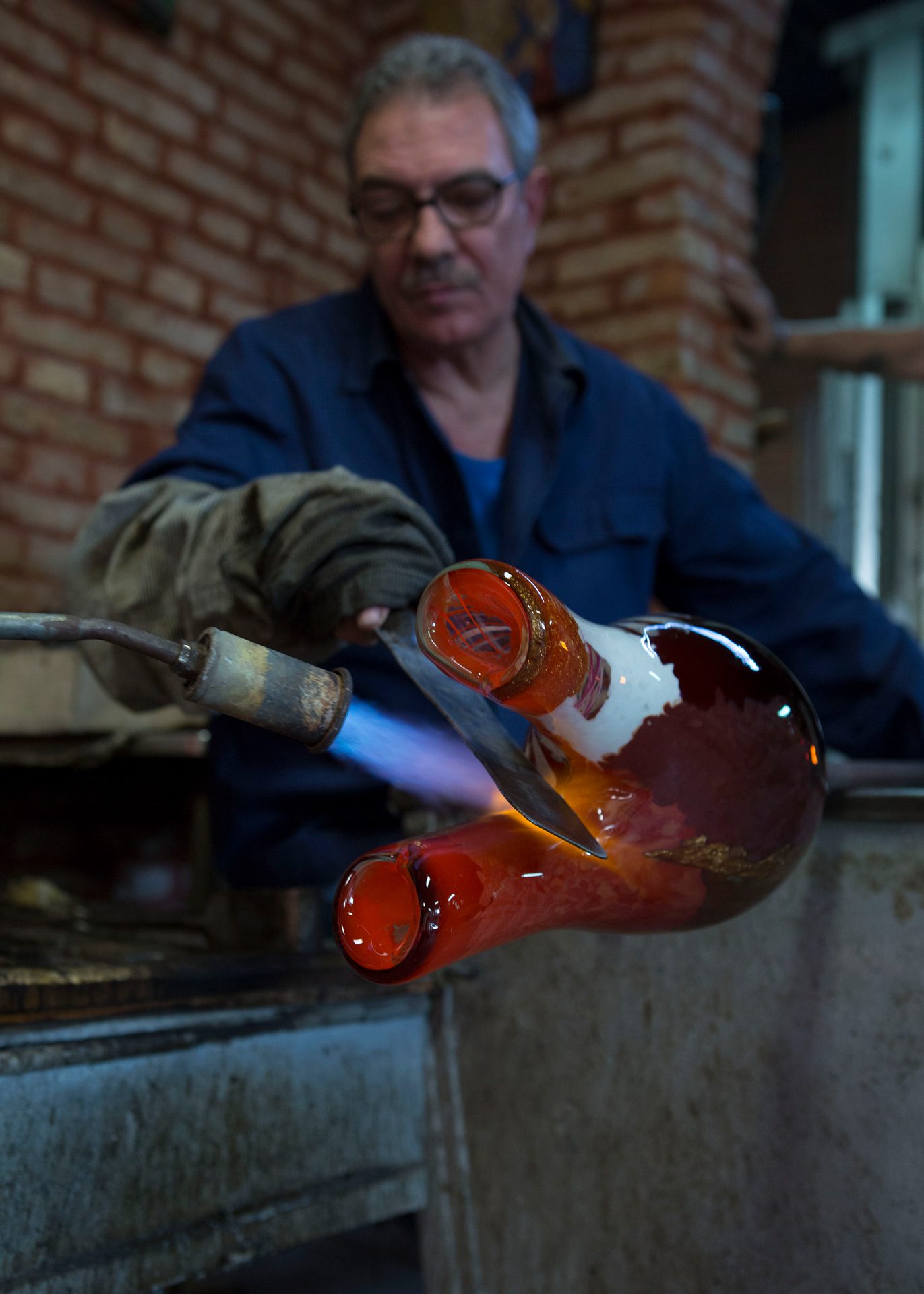A timeless art
A talent handed down from generations
More than nine centuries ago, the island of Murano was chosen by the Serenissima Republic as the ideal place to move in block the processing of glass, dangerous activity to lead in a Venice at that time consisting mostly of wooden buildings. All the factories were built with a precise orientation taking into account the two directions in which the wind blows in the island, so that it carried away with it the fumes and the heat – and also the fire, if ever it should have happened – without consequences.
Never as in the case of glass, the distinction between craftsmanship and art is so subtle as to become evanescent. It is not only a question of manual skill or technical ability, but of pure artistic talent and a great deal of experience, necessary to learn to dominate such a particular subject. The artistic glass of Murano has become today a product of extreme quality, created by a few great masters who still work on the island, artists who know glass and know how to work, able to experiment with colors and shapes, able to give life both to amazing large sculptures as well as delicate objects of very light blown glass, such as glasses and cups, innovating the tradition with modern lines and contemporary styles.

Preparing the color
The glass is mainly composed of pure siliceous sand that takes on the different colors with the addition of metal oxides common hours. This compound, with very small additions of other substances, is melted at very high temperatures, turning into colored glass.
Each color is characterized by a different oxide that determines the intensity according to the amount used.

Processing of glass
The artistic glass, whether blown by mouth or worked by hand, requires work groups composed of a master plus three or four other people specialized in the different stages of processing.
The master, the cornerstone of the group, with his sensitivity and artistic ability blows or shapes the piece, always reaching the desired shape and size.

Tempera of the finished object
The piece made by the master, still very hot, is introduced in the “tempering” (long belt cooling furnace).
Here the workpiece flows and cools slowly in many hours of permanence and comes out ready for the subsequent processing.

Refinement in moleria
Kiln-blown and tempered objects are cold finished by experienced grinders who proceed to the sanding or other types of diamond wheel finishing.
With different technologies, based on diamond wheels, glass works become finished products ready to be signed.
